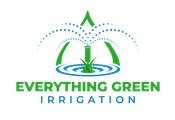How to Design an Efficient Irrigation System for Your Yard
A well-designed irrigation system is essential for maintaining a healthy and thriving yard. An efficient irrigation system not only conserves water but also saves you time and money in the long run. Whether you have a small garden or a large landscape, careful planning and design can help you make the most of your resources while keeping your plants happy and hydrated. In this blog post, we will discuss the key considerations and steps involved in designing an efficient irrigation system for your yard.
Evaluate Your Yard's Needs
Before you begin designing your irrigation system, take the time to assess your yard's specific needs. Consider factors such as:
Plant types: Different plants have different water requirements. Group plants with similar water needs together to make irrigation more efficient.
Soil type: The type of soil in your yard affects how quickly water is absorbed and how often you need to irrigate. Sandy soils drain quickly and may require more frequent watering, while clay soils retain water longer and require less frequent irrigation.
Climate and weather: Your local climate and seasonal weather patterns will also influence your irrigation system design. For example, in arid regions, you may need to water more frequently, while in areas with regular rainfall, you may need supplemental irrigation only during dry spells.
Sun and shade: Areas of your yard with more sun exposure may require more frequent watering than shaded areas.
Choose the Right Irrigation Method
There are several irrigation methods to choose from, each with its own advantages and drawbacks. The most common methods include:
Drip irrigation: This system delivers water directly to the root zone of plants through a network of tubes and emitters. It is highly efficient, as it minimizes water loss through evaporation and runoff. Drip irrigation is best suited for gardens, flower beds, and small-scale landscapes.
Sprinkler systems: These systems spray water over a larger area, making them suitable for lawns and larger landscapes. However, they can be less efficient than drip irrigation due to water loss through evaporation and wind. To maximize efficiency, choose sprinkler heads with low precipitation rates and use pressure regulators to avoid misting.
Soaker hoses: These porous hoses release water slowly along their length, providing a gentle and even watering for garden beds and borders. While not as precise as drip irrigation, they can be an affordable and easy-to-install option for small-scale applications.
Plan Your Irrigation Zones
Divide your yard into separate irrigation zones based on plant water needs, soil type, and sun exposure. By doing this, you can tailor your irrigation system to deliver the right amount of water to each area, avoiding over- or under-watering. Be mindful of the capacity of your water source and the flow rate of your irrigation system when planning your zones. If necessary, use valves to regulate water flow between zones to ensure even distribution.
Install the Right Equipment
Investing in quality equipment is crucial for the efficiency and longevity of your irrigation system. Consider the following components:
Pressure regulators: These devices maintain consistent water pressure throughout your system, ensuring even distribution and reducing water waste.
Timers and controllers: Automating your irrigation system with a timer or smart controller can help you water at the optimal times and frequencies, reducing water waste and promoting plant health.
Backflow preventers: Installing a backflow preventer helps protect your water supply from contamination by preventing water from flowing back into the main supply line.
Filters: Depending on your water source, you may need filters to remove debris and prevent clogging in your irrigation system.
Regular Maintenance and Monitoring
To keep your irrigation system running efficiently, establish a routine maintenance schedule. This includes checking for leaks, cleaning filters, adjusting sprinkler heads, and inspecting drip emitters for clogging or damage. Also, keep an eye on your plants for signs of over- or under-watering, as this can indicate issues with your system.
Seasonal adjustments are also essential. Monitor your local weather conditions and adjust your watering schedule accordingly. During rainy periods, consider installing a rain sensor or integrating your system with a smart weather-based controller to automatically reduce or stop irrigation when it's not needed.
Consider Water Conservation Techniques
In addition to designing an efficient irrigation system, implementing water-saving techniques can further reduce your water usage and promote a sustainable landscape. Some strategies include:
Mulching: Applying a layer of organic mulch around your plants helps retain soil moisture, reduces evaporation, and suppresses weed growth, which can compete with your plants for water.
Choosing drought-tolerant plants: Selecting plants that are adapted to your local climate and require less water can significantly reduce your overall irrigation needs.
Rainwater harvesting: Collecting rainwater from rooftops in barrels or cisterns can provide an additional water source for your irrigation system, reducing your reliance on municipal or well water.
Designing an efficient irrigation system for your yard requires careful planning and attention to detail. By evaluating your yard's specific needs, choosing the right irrigation method, planning your zones, investing in quality equipment, and performing regular maintenance, you can create a system that conserves water, saves you money, and promotes a healthy and vibrant landscape. Additionally, incorporating water conservation techniques like mulching, using drought-tolerant plants, and harvesting rainwater can further enhance the sustainability and efficiency of your irrigation efforts.
